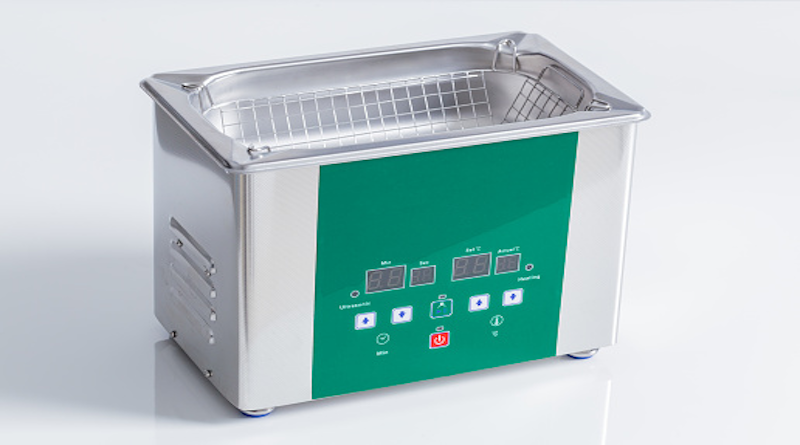5 Things To Know About Ultrasonic Cleaners
As a discerning consumer, especially for something as important as the organisation you run, it’s important to be sceptical. For instance, does the button on that pedestrian crossing do anything? Is that progress bar on your computer screen misleading you? Do you think ultrasound mosquito-repelling apps on your phone work? (spoiler: they don’t). And if you didn’t fall for ultrasound insect repellent on your smartphone, surely ultrasonic cleaners don’t work either.
While it’s true that the idea of immersing items and components in liquid and adding high-frequency sound waves to excite the liquids and solvents for an incredibly deep clean may seem unlikely, this really is a myth that can’t be busted. As with so many highly innovative technological marvels, though, the trick is hidden in the detail – in this case, the working principle of causing cavitation in solution molecules, otherwise known as the wonders of sonic energy. Does it work? Not only does it work, but it’s a rapidly growing industry that is expected to grow from a $1.7 billion market at present to approaching $2.5 billion by 2024. Why the growth? Because the latest advances in ultrasonic cleaner tech is making it one of the most important cleaning innovations for the deepest, most disinfecting and sterilising clean for reusable instruments and components across the medical, laboratory, computing, manufacturing, automotive, and many other industries like yours.
Is it worth the investment? It depends how thoroughly you need your items, parts and components cleaned. Even the most thorough scrubbing, for instance, will be no match for the way the ultrasonic waves and the resulting microscopic bubbles are able to creep into the most undiscernible nooks and crannies – where those harmful contaminants just love to hide away. When you consider reusable operating room and dental instruments, for instance, even a deep enzyme soak is not able to compete with the clean sweep of every microscopic contaminant that ultrasonic cleaners can achieve.
Not yet convinced? Here are 5 factors that may help:
1. The materials
While ultrasonic cleaners are generally made of aluminium or stainless steel, it’s the tank that is really doing the work. They come in different sizes depending on the scale of the solvent solutions you’ll be using, with a French Fries-like basket or rack enabling easy handling of your cleaned components. Small-scale portable cleaners, however, will not feature a tank at all.
2. The mechanism
Without getting too deep in the working principles, it’s basically the transducer that does the hard work, converting the electrical power into ultrasonic energy. The result is the rapid formation and subsequent collapse of cavitation bubbles, which blast away the tiniest and most harsh of microscopic contaminents.
3. The frequency
It’s the frequency of the ultrasonic waves that give them the incredible power, with the cycles measured in the multiple thousands per second. The intensity of the frequency for your specific application will depend on how harsh or delicate you need that clean to be.
4. The tech type
Just like shoes, ultrasonic cleaners come in many types, shapes, sizes and intended uses. From a heavy duty industrial cleaner to a smaller unit suitable for the lab or a portable machine for items like jewellery, there’s a lot out there on the market.
5. The solutions
The ultrasonic waves may work the magic, but don’t overlook the importance of the liquid cleaning solutions. The precise formulation, particularly the surface tension, will affect the effectiveness of the clean, and you’ll need different solutions for food as opposed to the cleaning of engine components.
Would your organisation or application benefit from an ultrasonic cleaner? As you browse the extensive range, consider your requirements for size, the item and contaminants in question, the power and frequency requirements, the solutions, the functionality, features, accessories and more. Need help? There’s a lot more to know about ultrasonic cleaners and what would be best for your particular industry, organisation and specific application, so don’t be shy to ask an expert.
